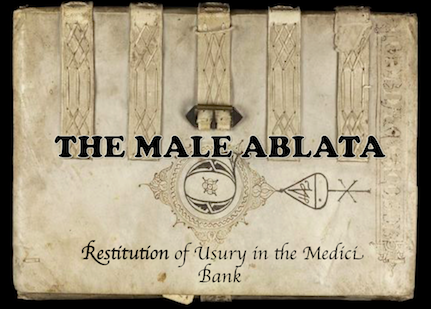Conclusion
However, let us go back to the Novitiate Altarpiece and ask ourselves once again: why these saints and why the Franciscan church of Santa Croce?
Given how concerned he was with the reputation of the monks to whom he donated art, it is worth exploring why Cosimo de’ Medici chose specifically Franciscans for this donation. From the thirteenth century onward, Franciscan preachers, who were especially committed to the wellbeing of the urban poor, regularly condemned usury and attacked moneylenders in their sermons. In the early fifteenth century, two Franciscans, Barnaba da Terni and Bernardino da Feltre, established Monti di Pietà, or mounts of piety, which were bank-like organizations that provided low-interest loans to the poor. Saint Anthony of Padua himself was known for passionate, sometimes even violence-inspiring sermons against usury, and had his teachings popularized in Florence by Bernardino of Siena.
Given the way Franciscans rallied against usury, it is clear why Cosimo de’ Medici, whose name was dragged through the mud by those accusing him of usury, wanted the approval of the Franciscans, rather than any other orders in the country. The Franciscans represented the poor majority, they would never lie to the Florentines whose trust Cosimo worked so hard to win. And if the Franciscans, who were so famous for their efforts to combat usury, the efforts that are so clearly represented in the miracle of St. Anthony, approved of Cosimo and placed his donation into their church, then who was Rinaldo degli Albizi or anyone else, to call him a usurer? Having his family’s patron saints, Cosmas and Damian, stand by St. Francis’s side while St. Anthony of Padua is publicly shaming a usurer in the predella is a clear way of saying to everyone in Florence:
“I, Cosimo de’ Medici, am against usury. I embrace this sin of mine, I publically repent for it, I am paying for it with this artwork, and I have the Franciscans, the most ardent opponents of usury, on my side accepting my gift and praying for the forgiveness of my sins. My conscience and reputation are therefore clear.”
Thus, by donating one painting to a church, a banker could avoid giving all of his life’s earnings back to his clients, win favors and receive prayers from pious churchmen, and overcome the stigma of a hopeless, avaricious sinner assigned to him by the society by building himself a reputation of a generous and pious patron of religious art.

